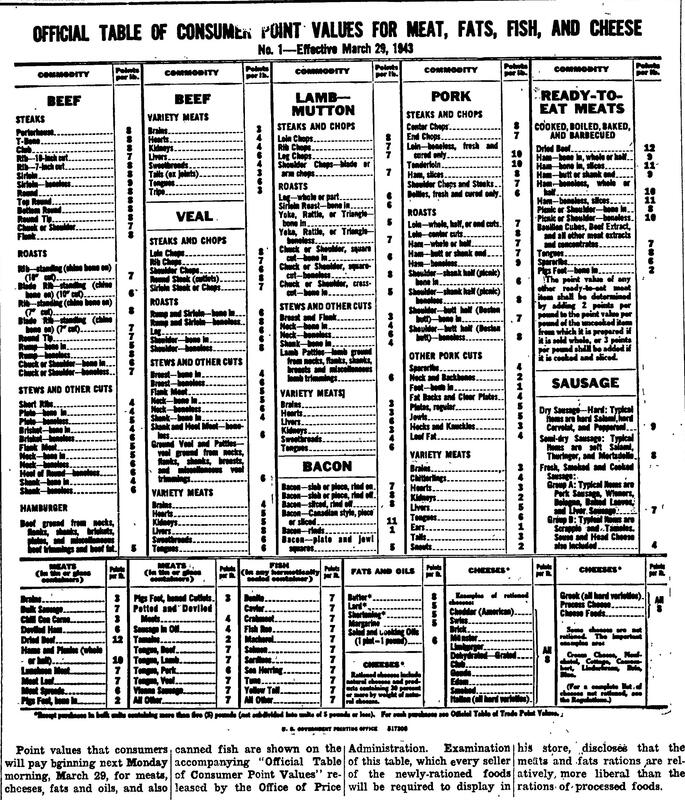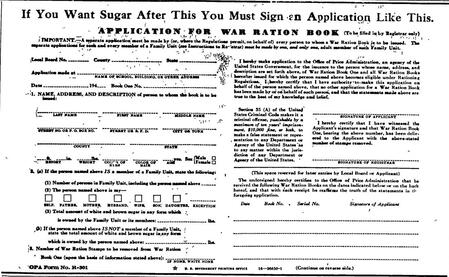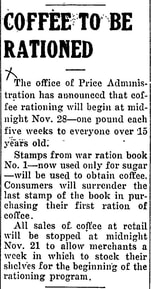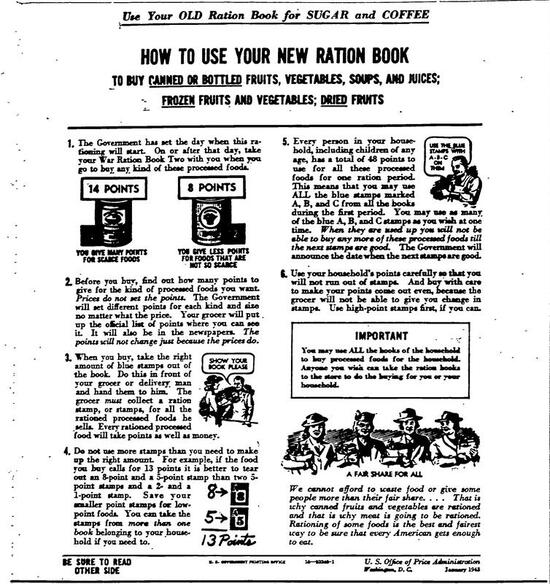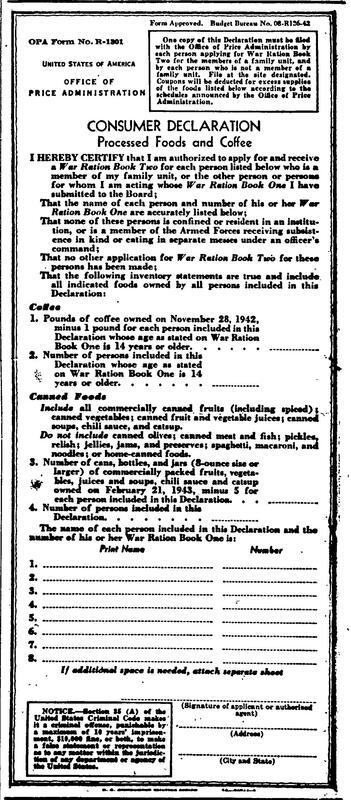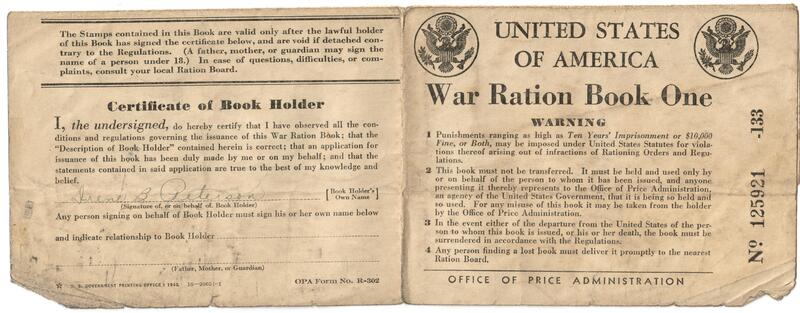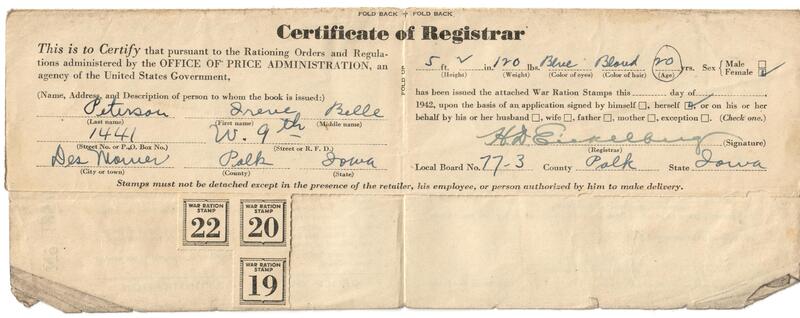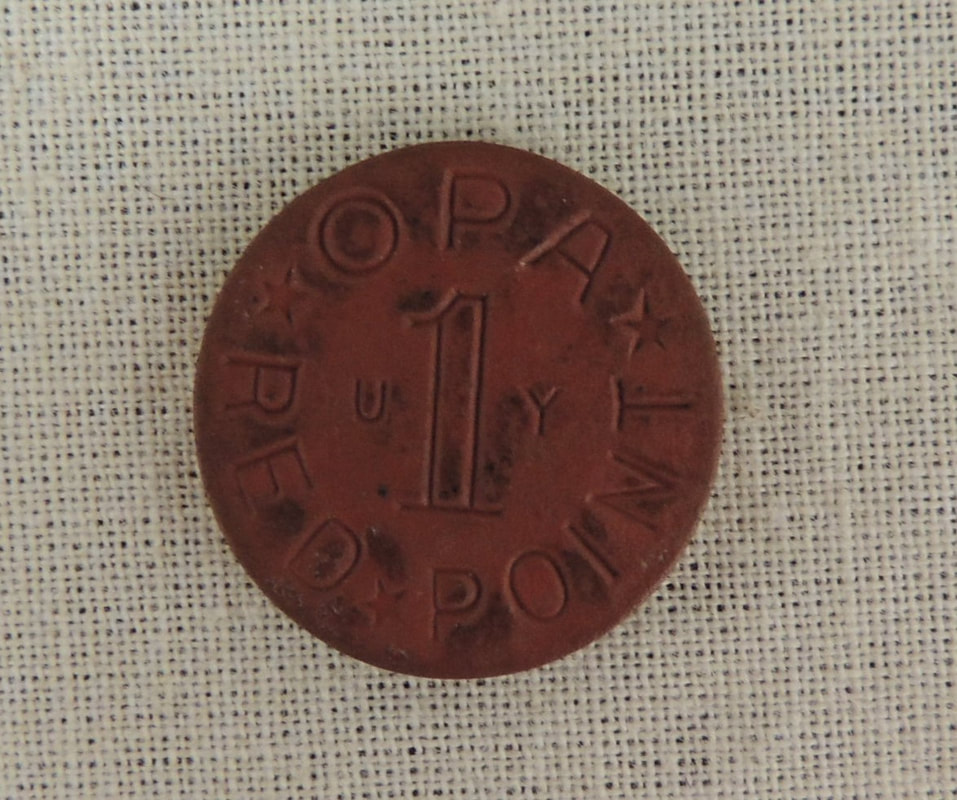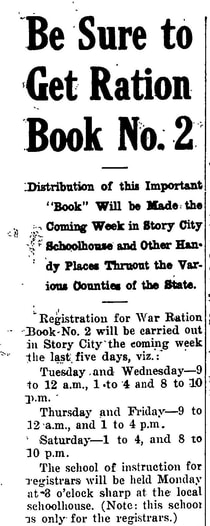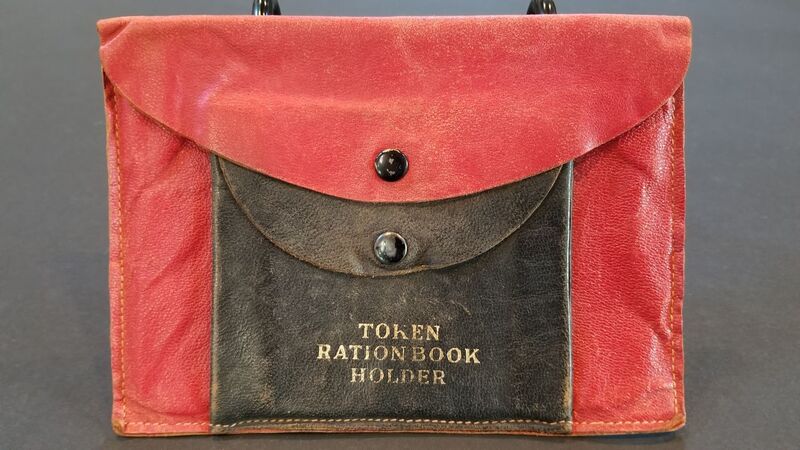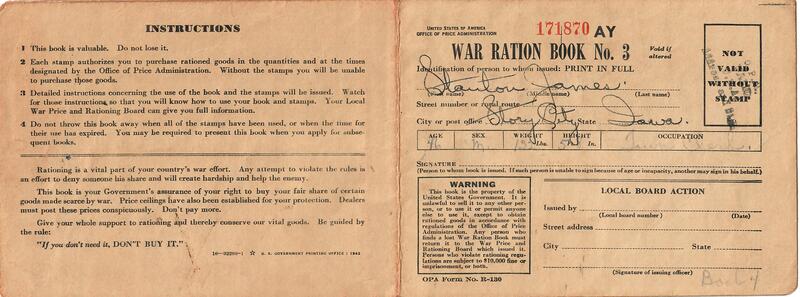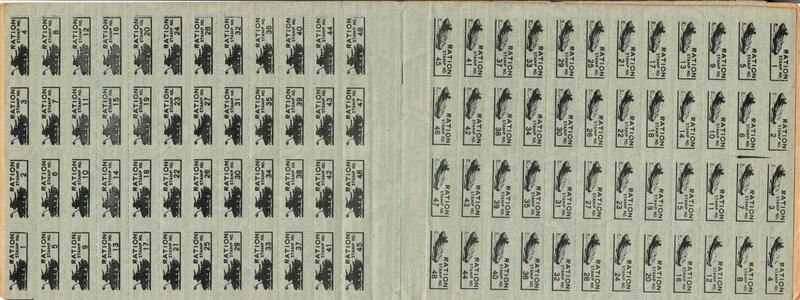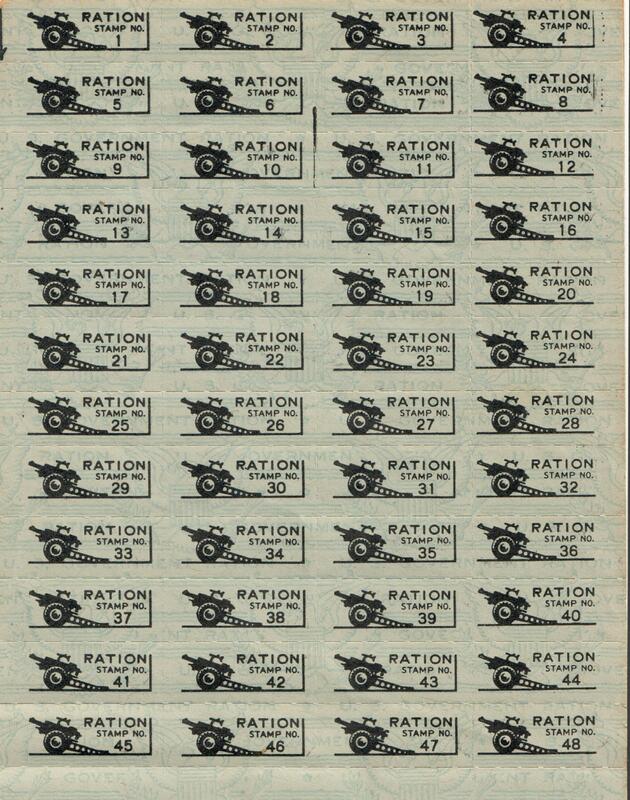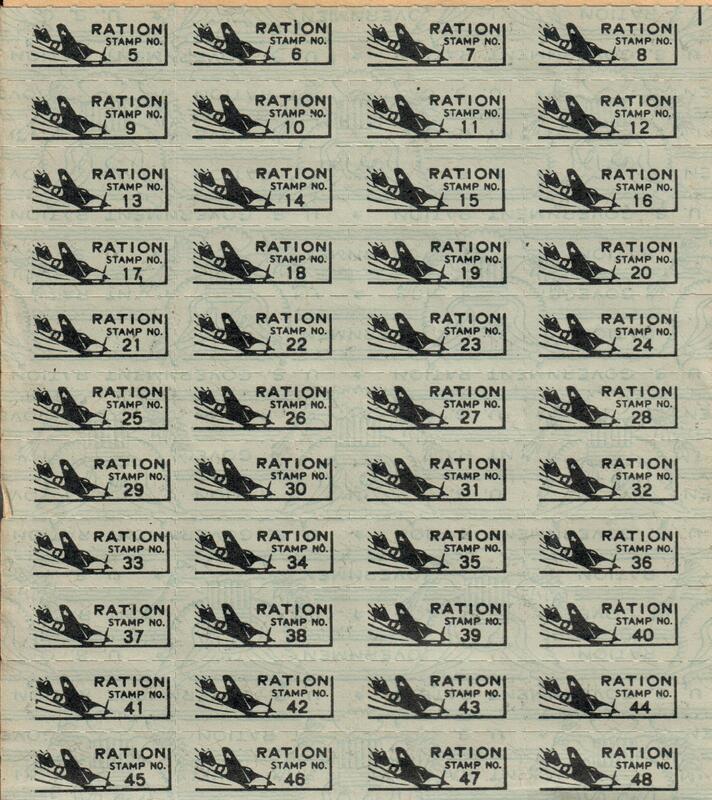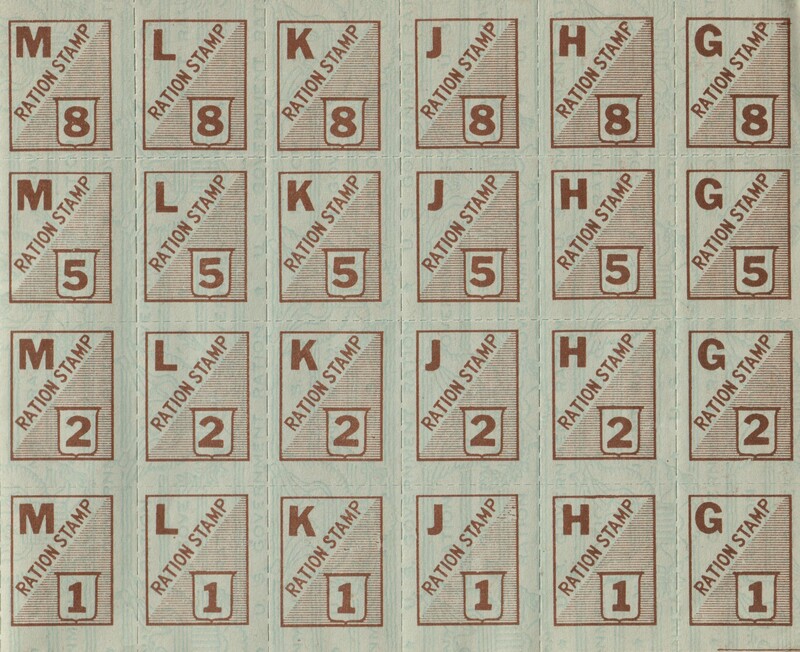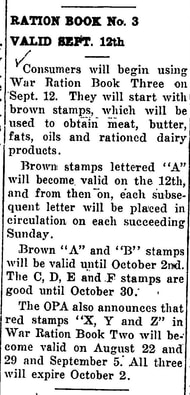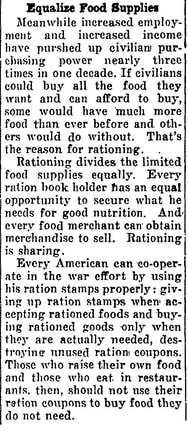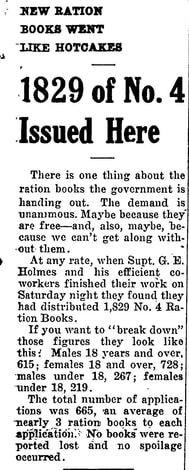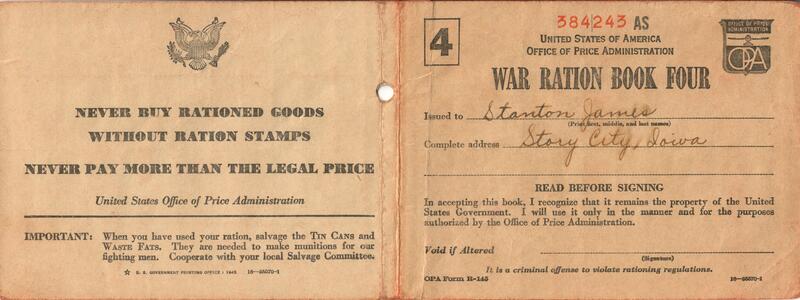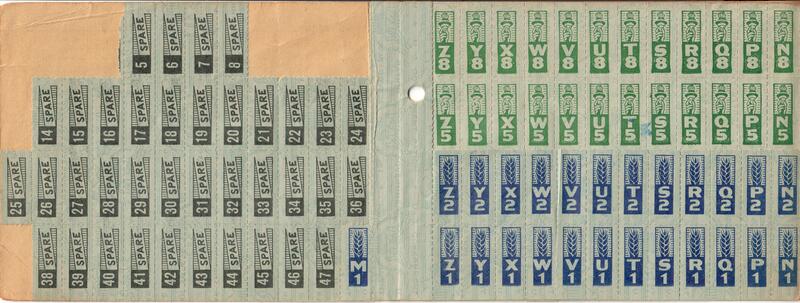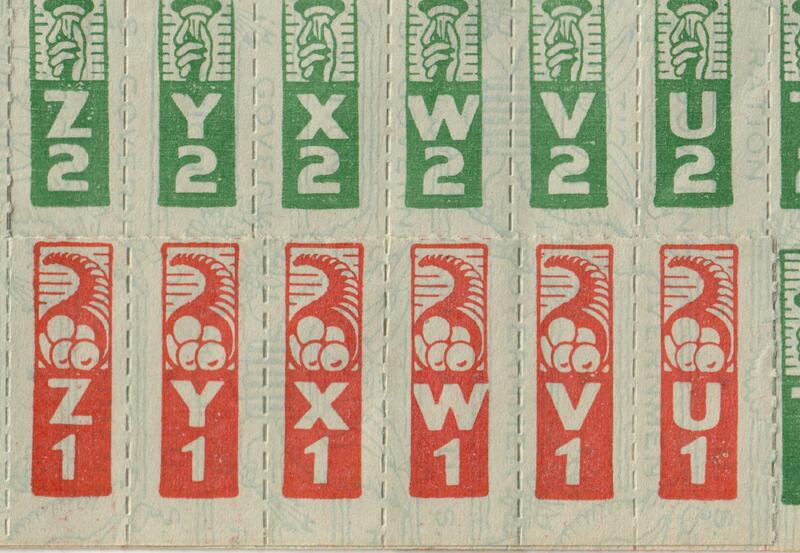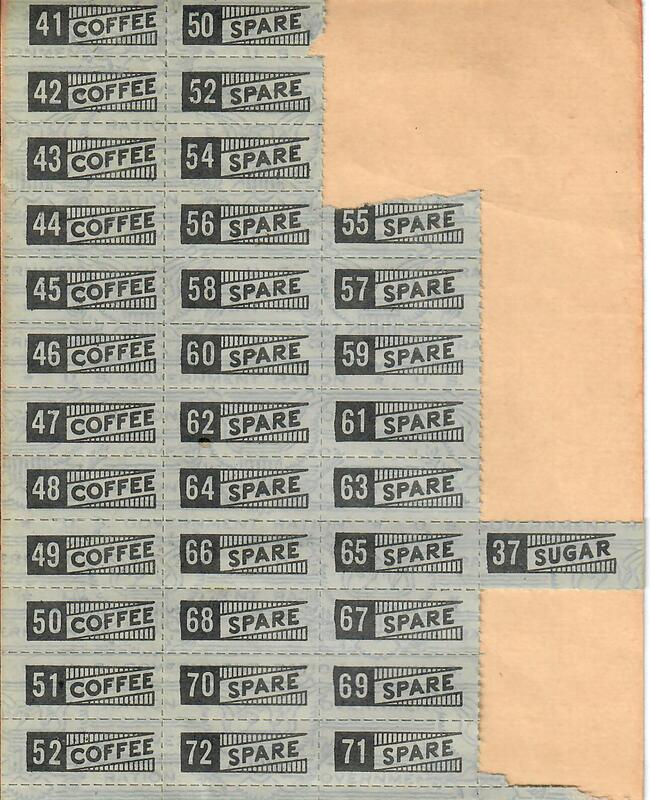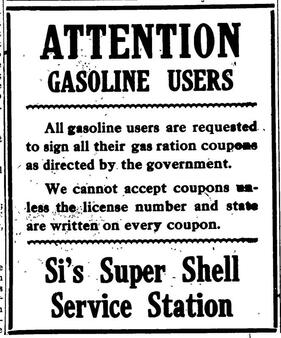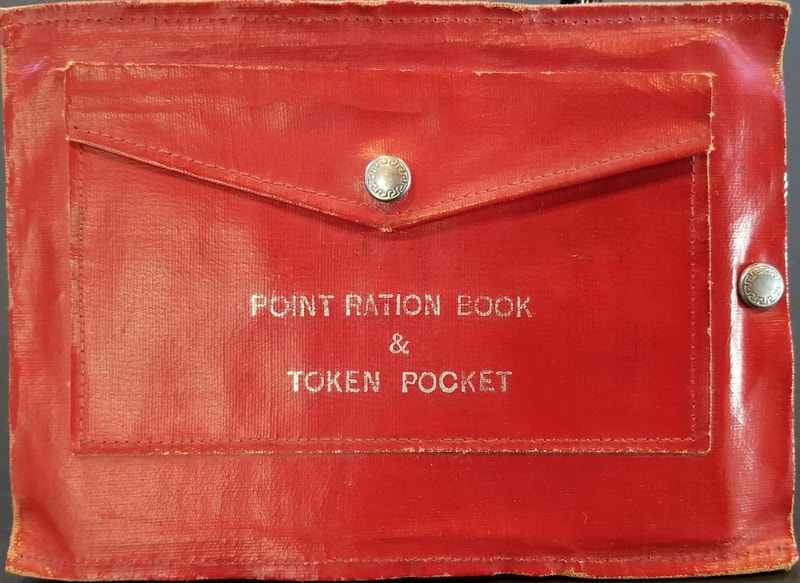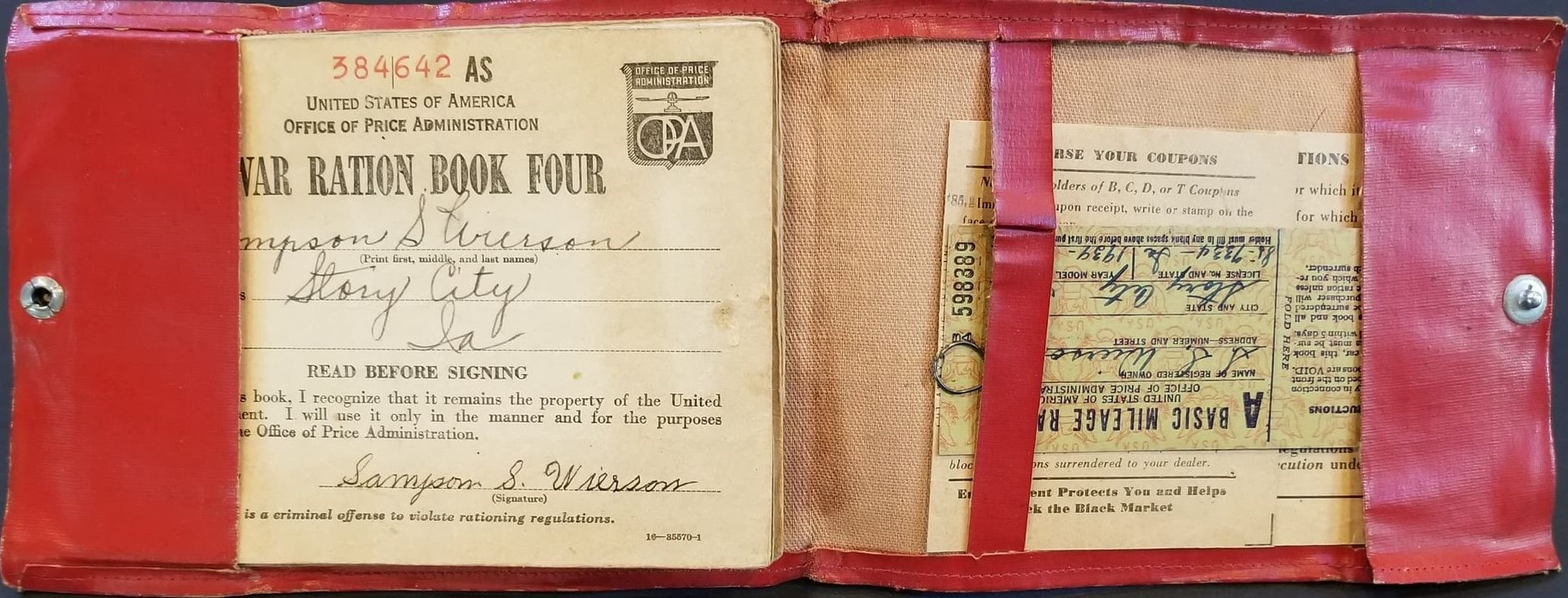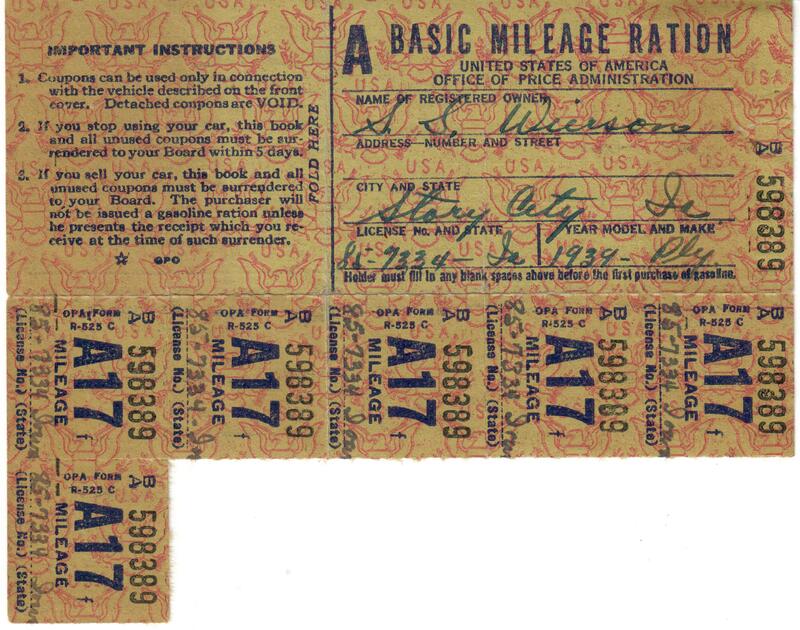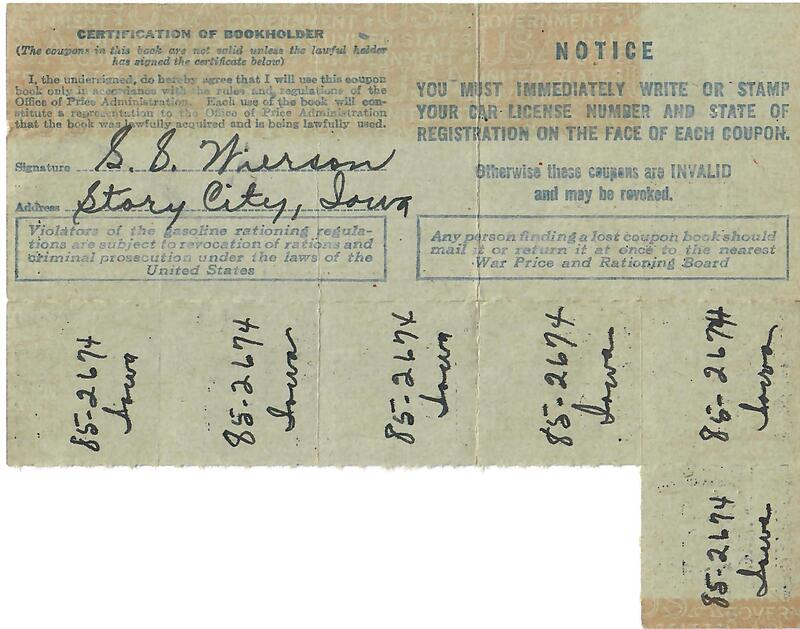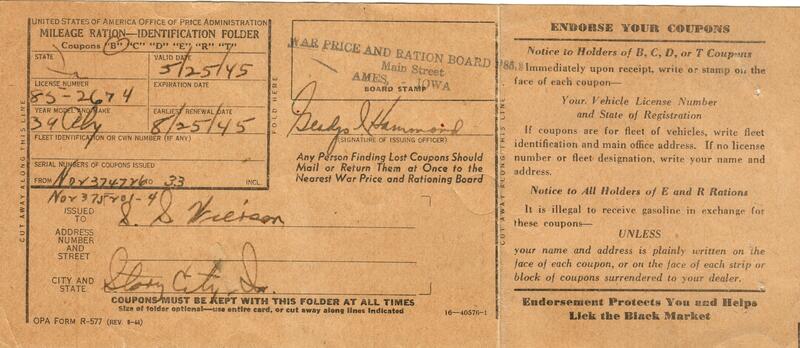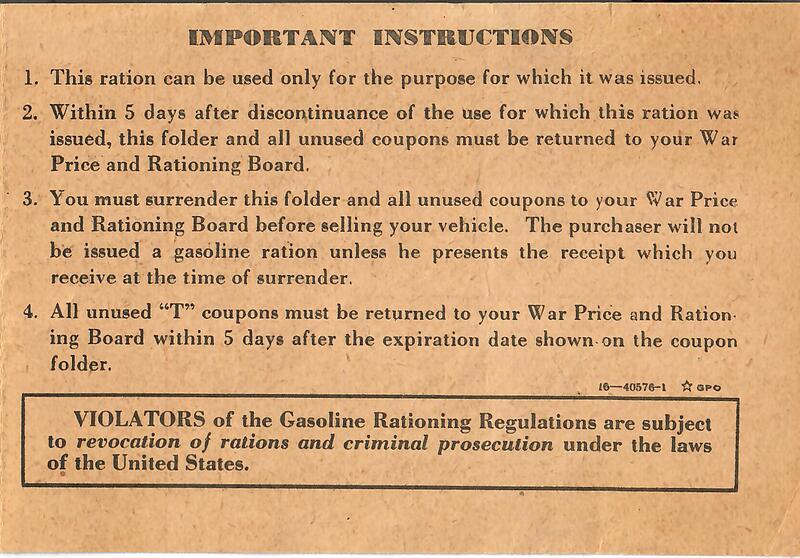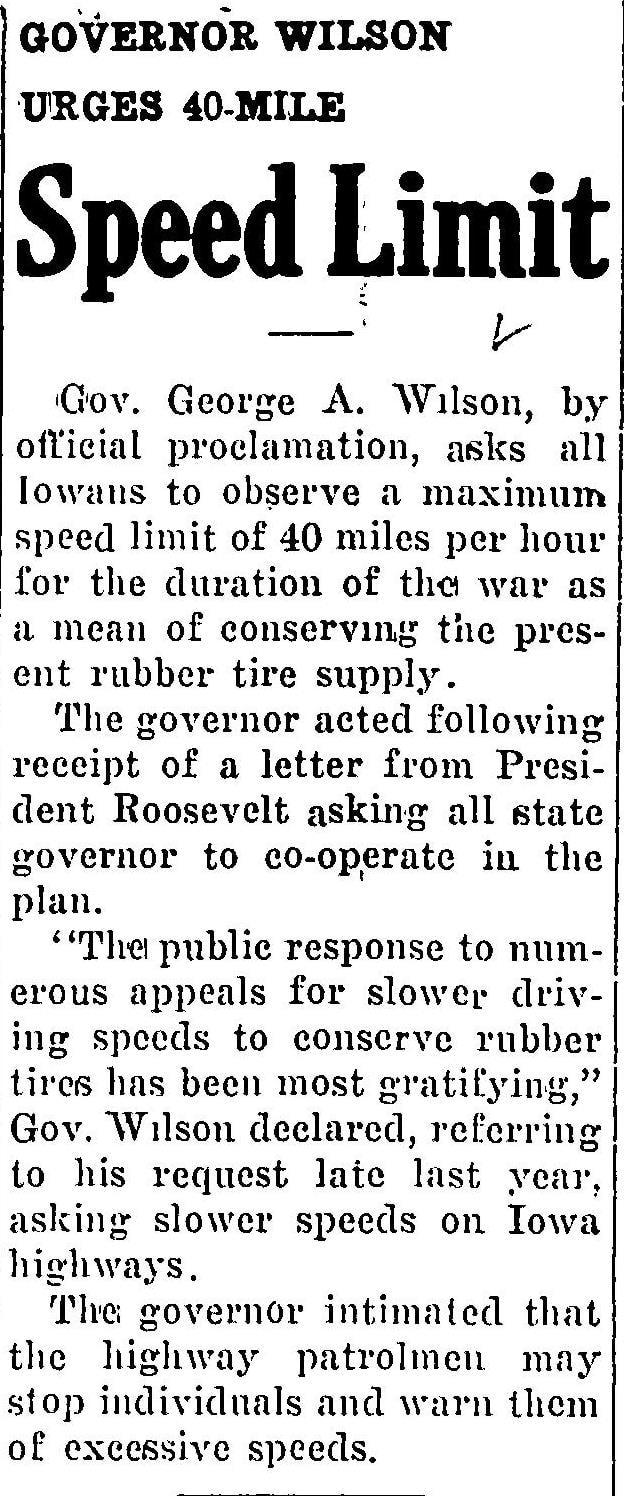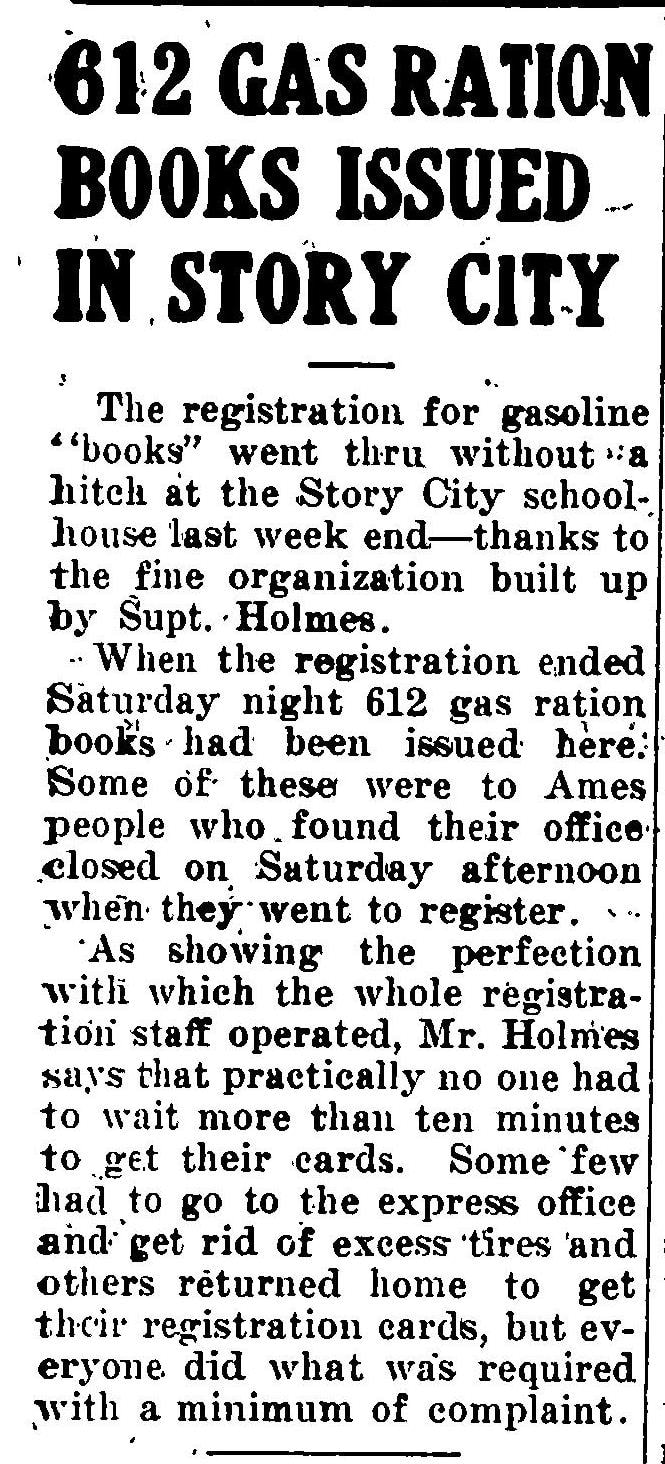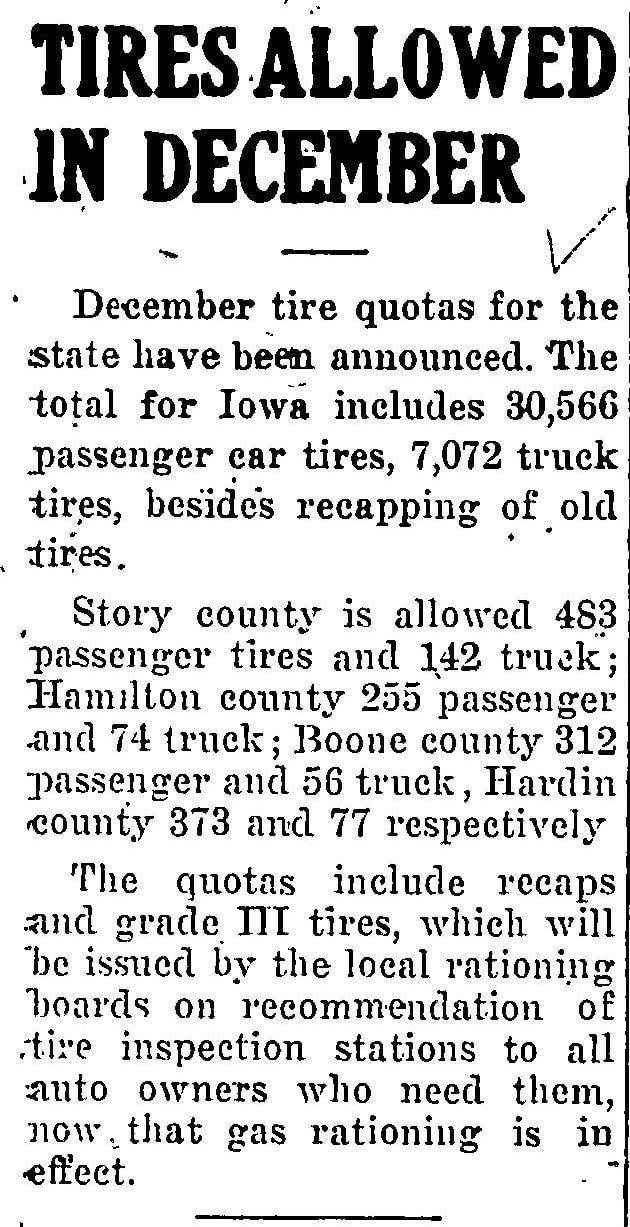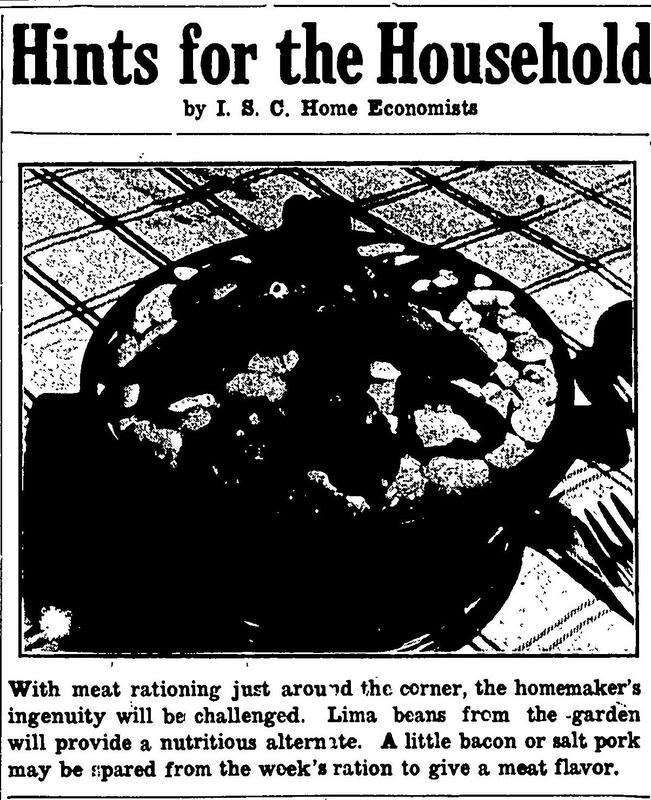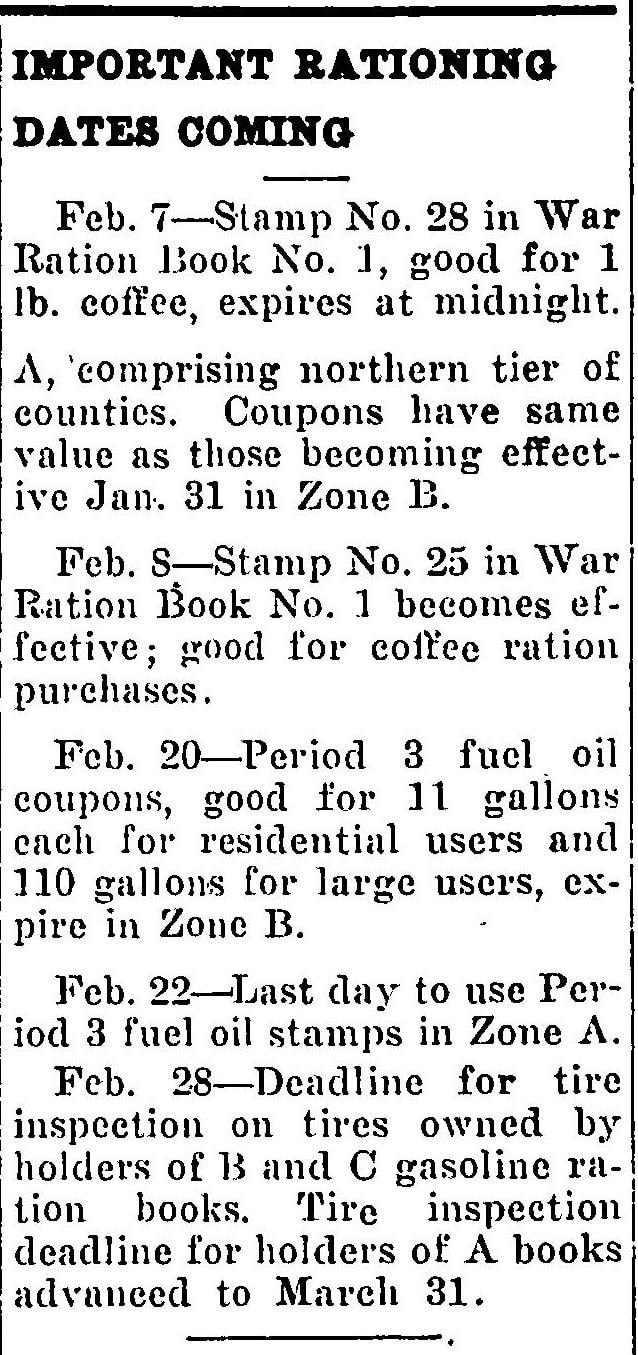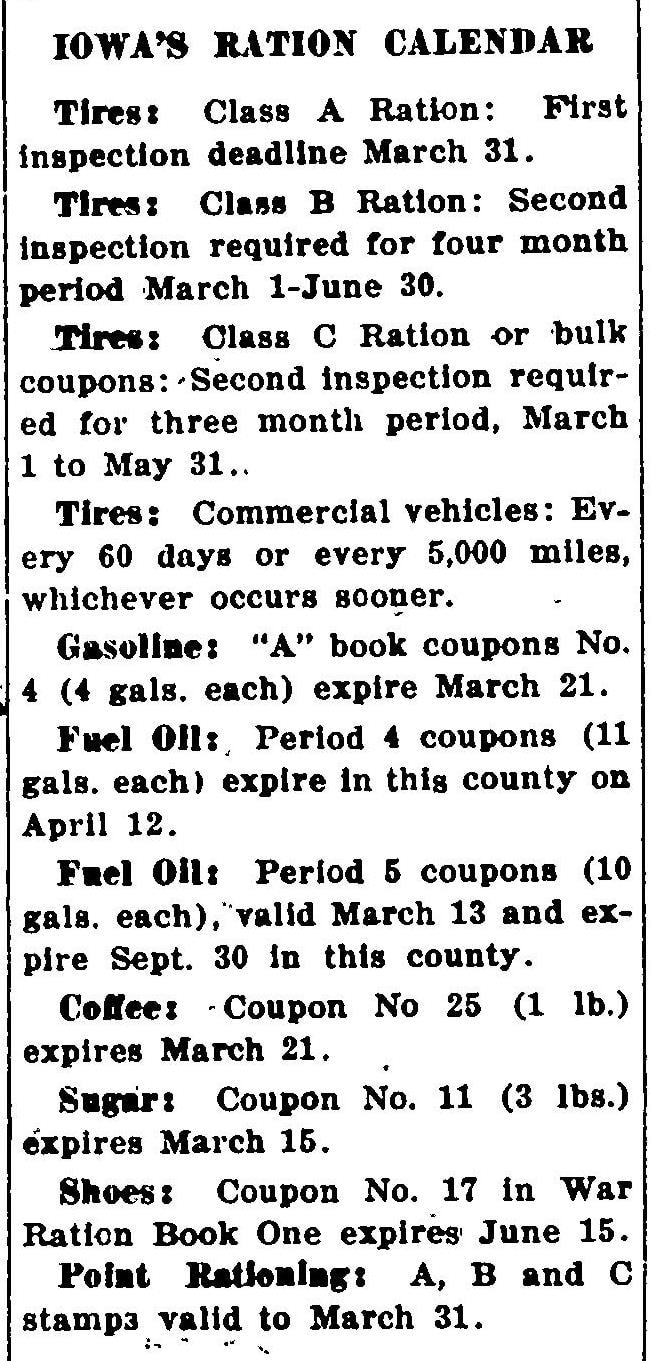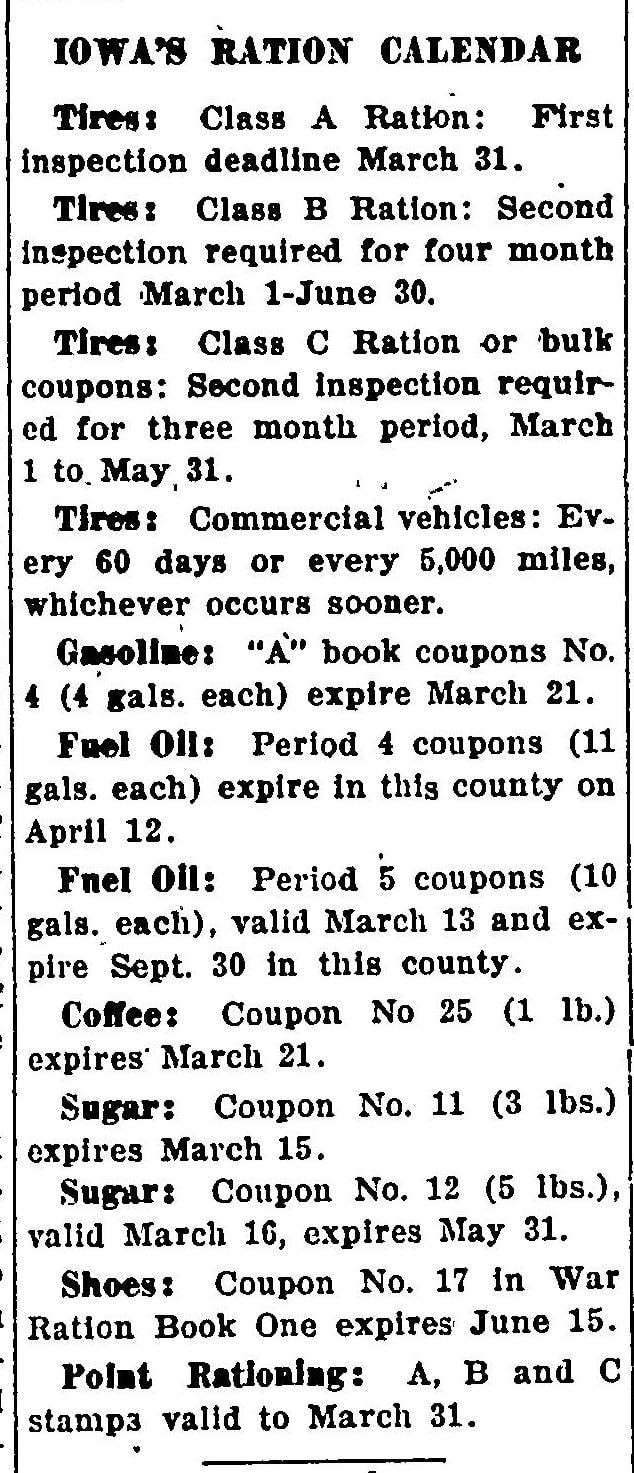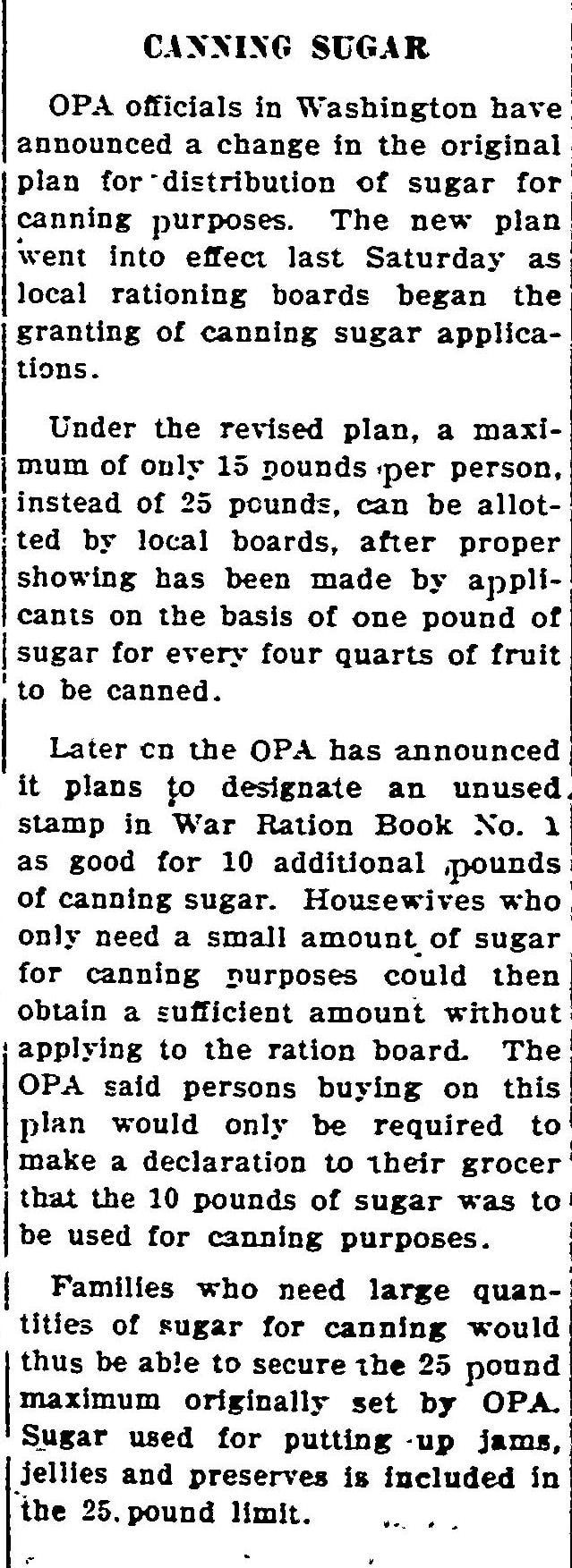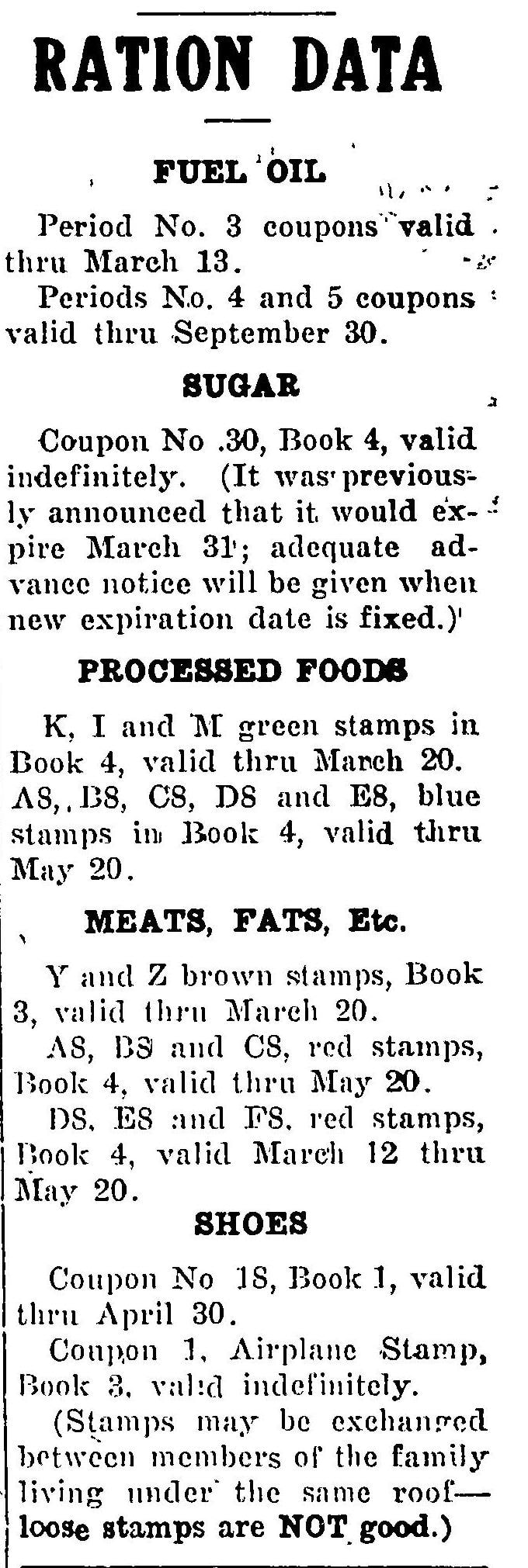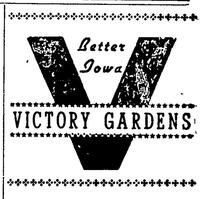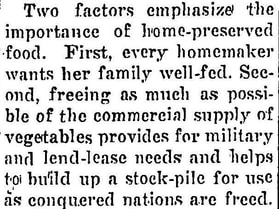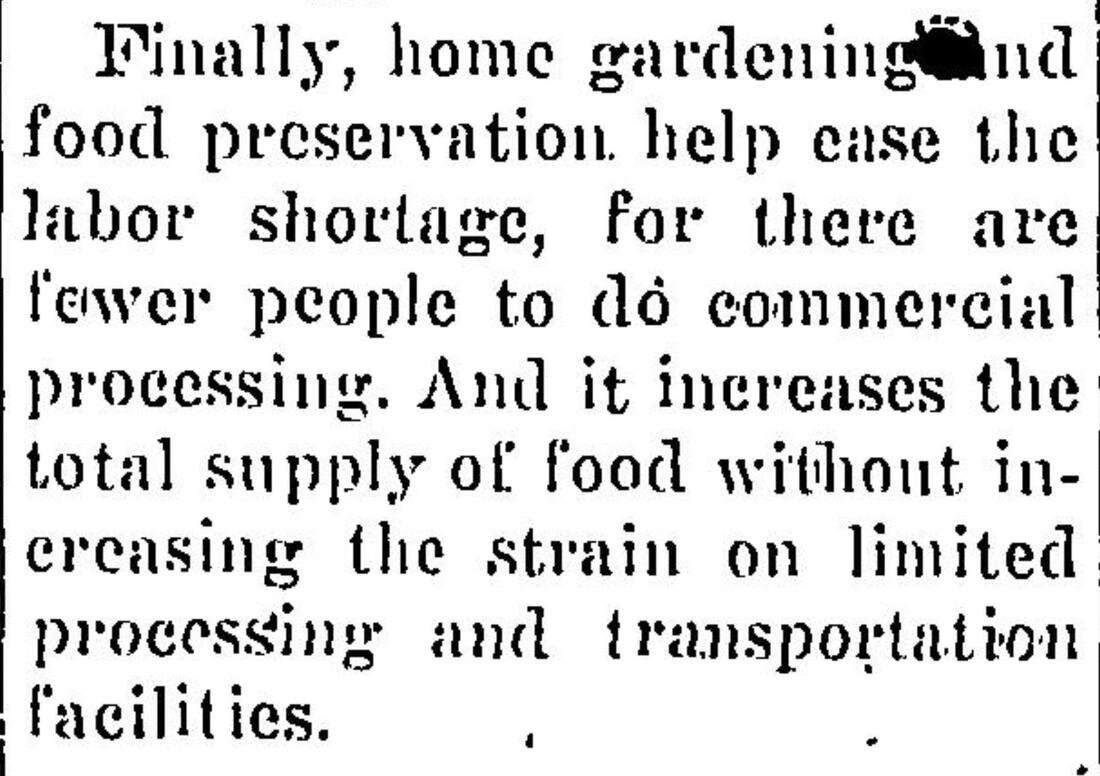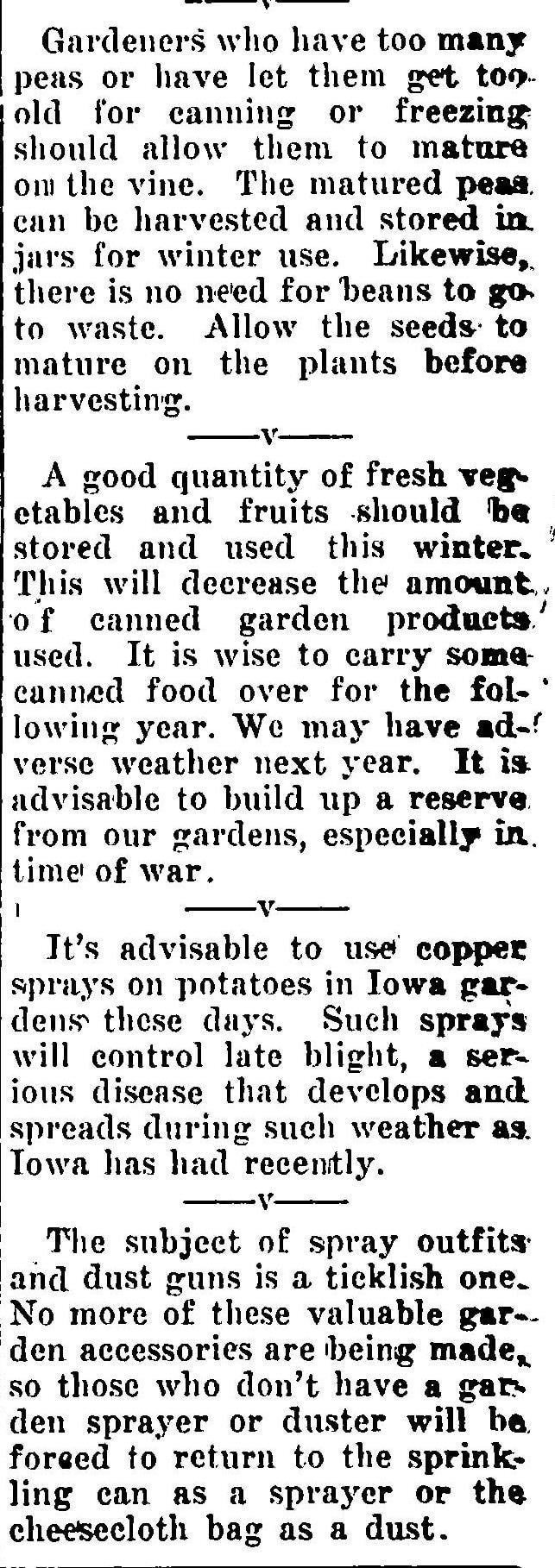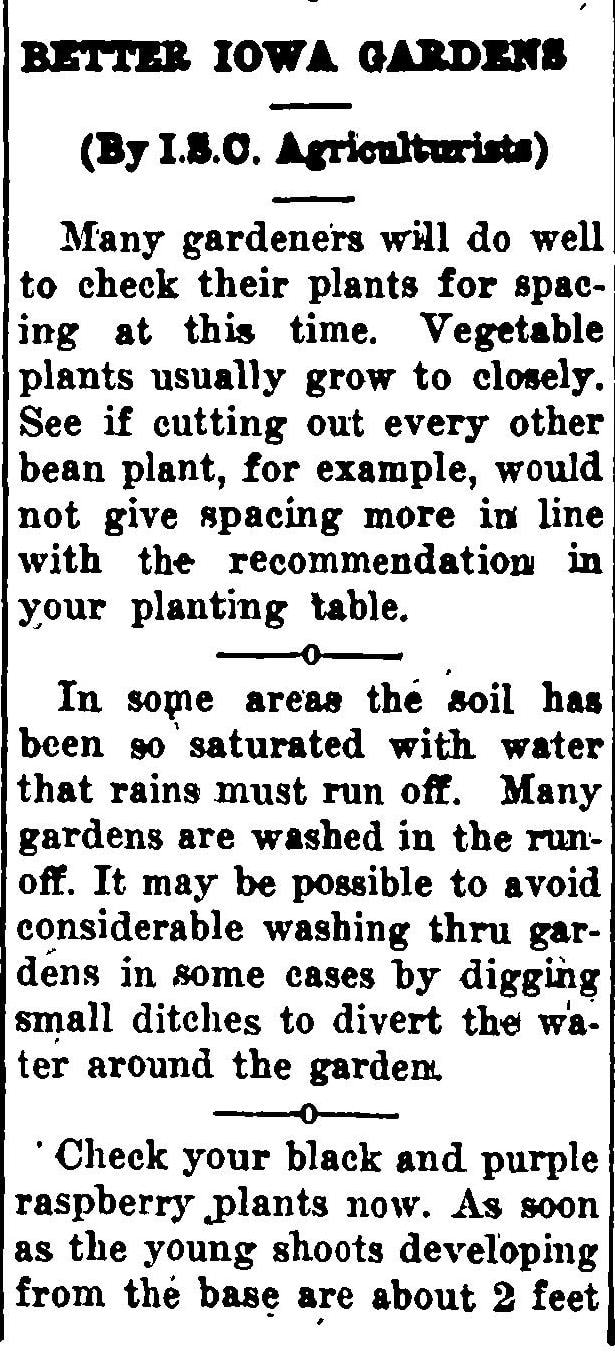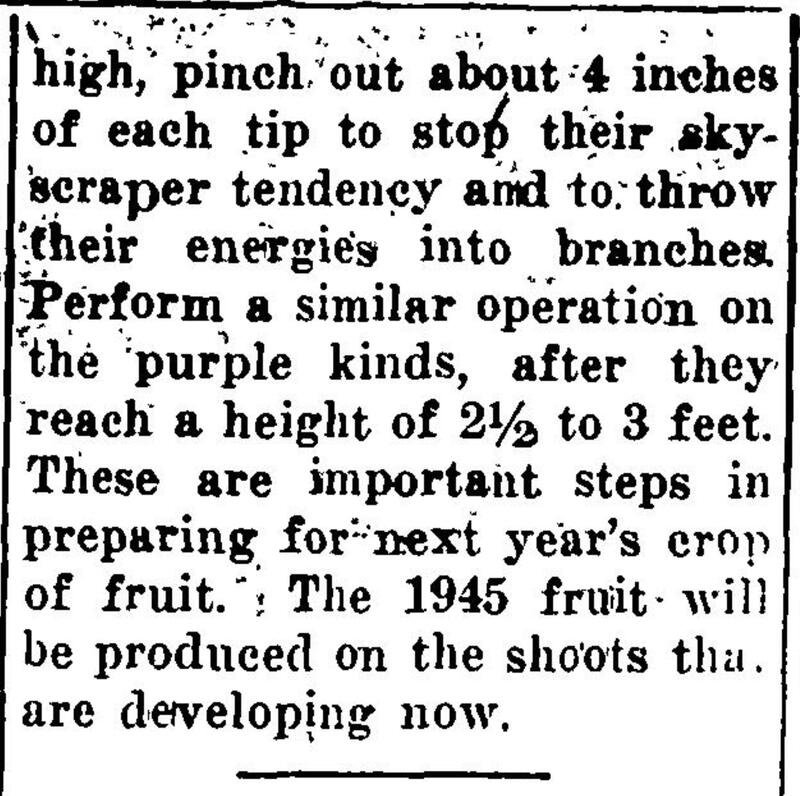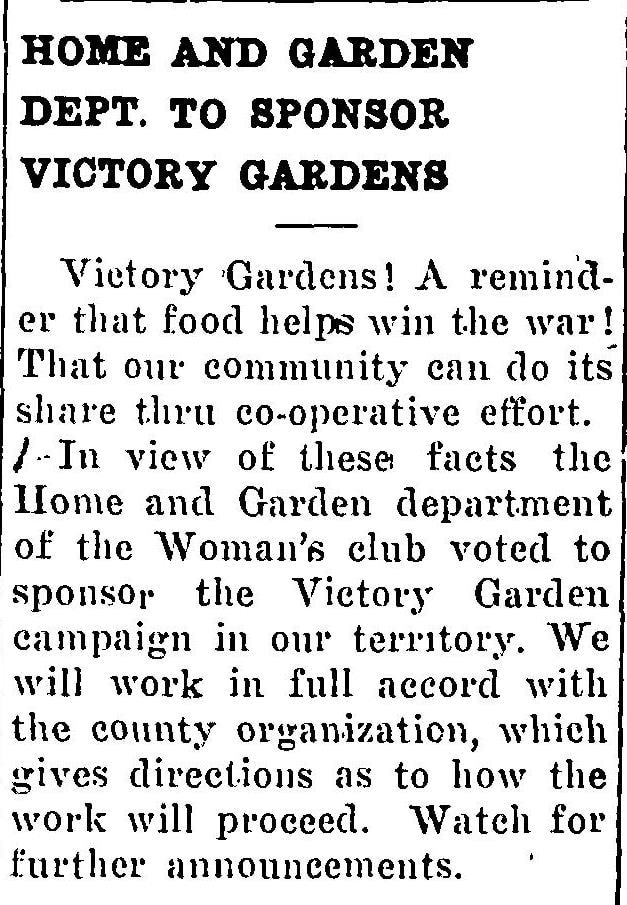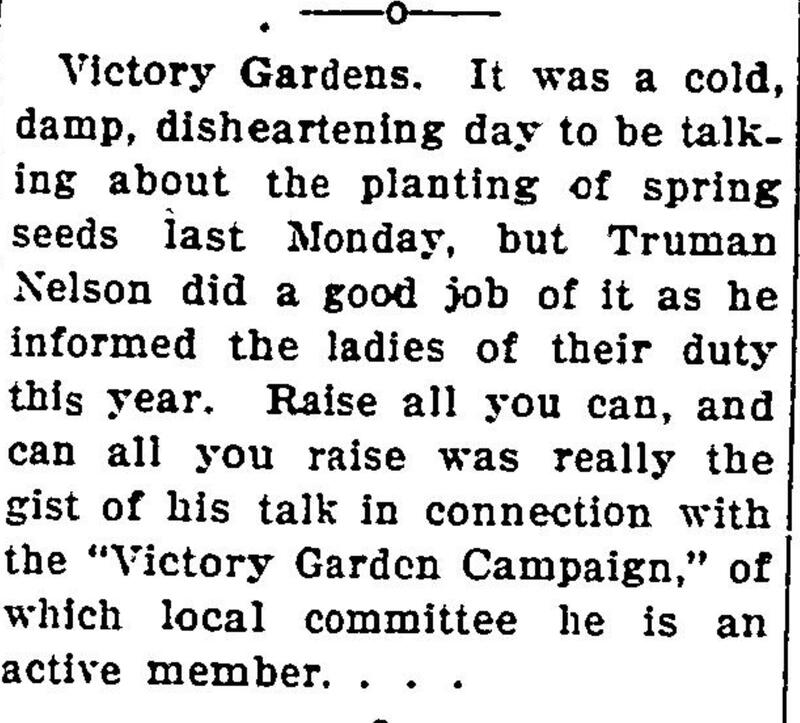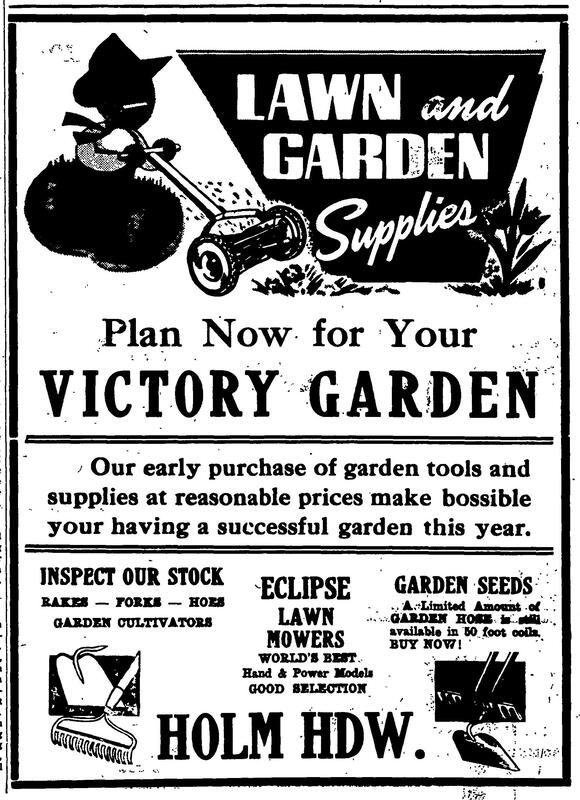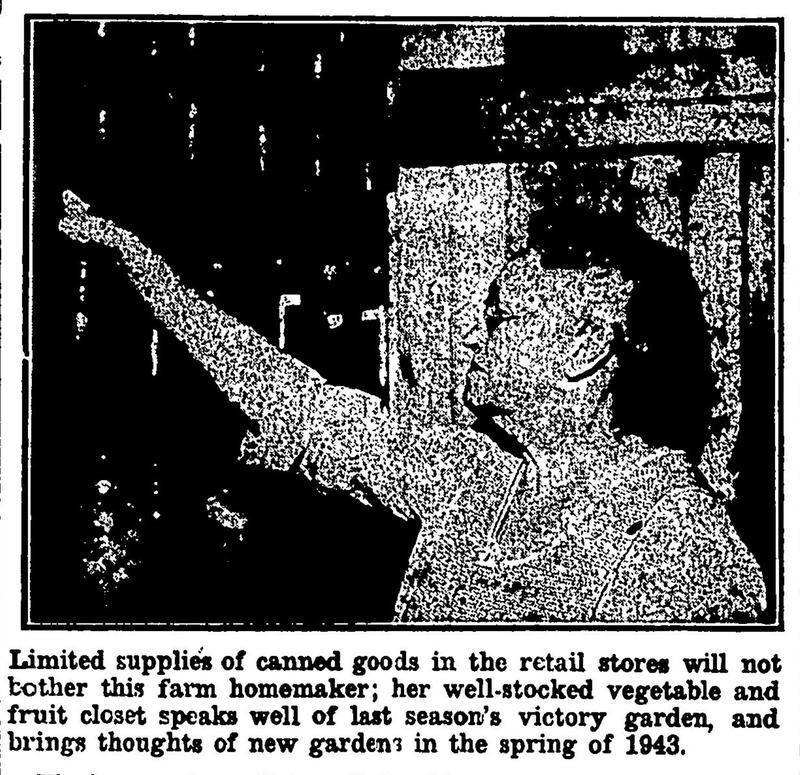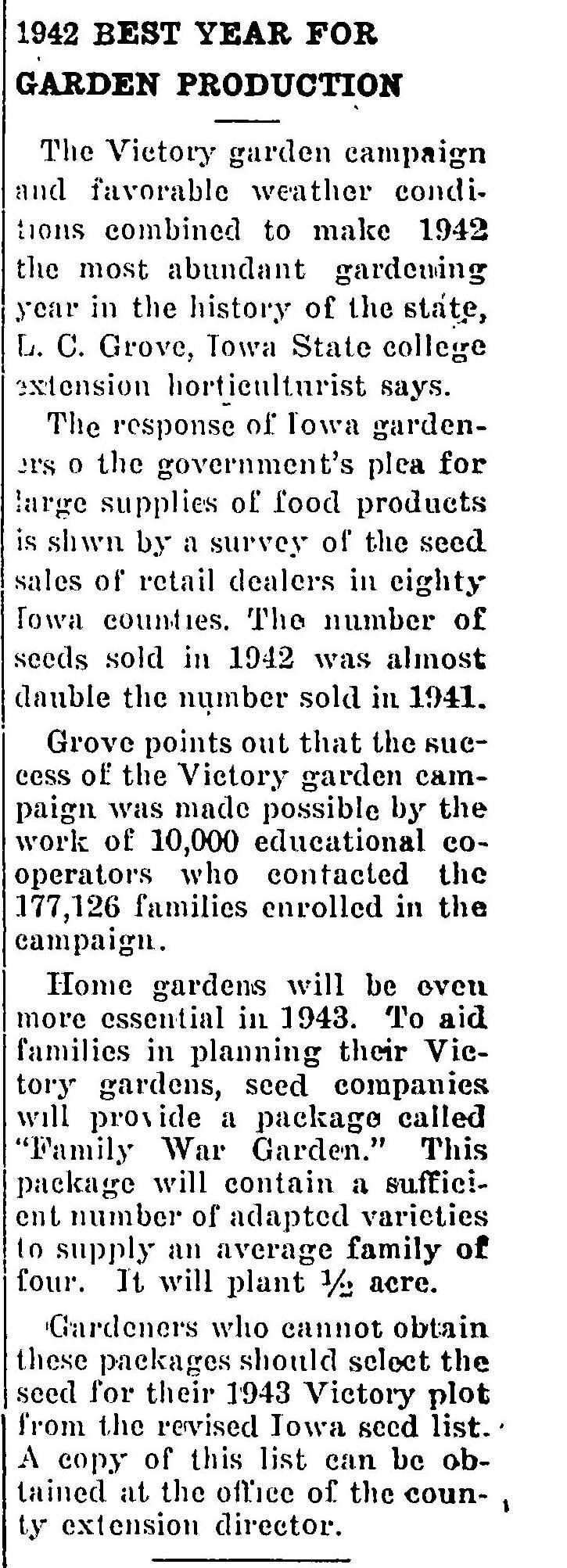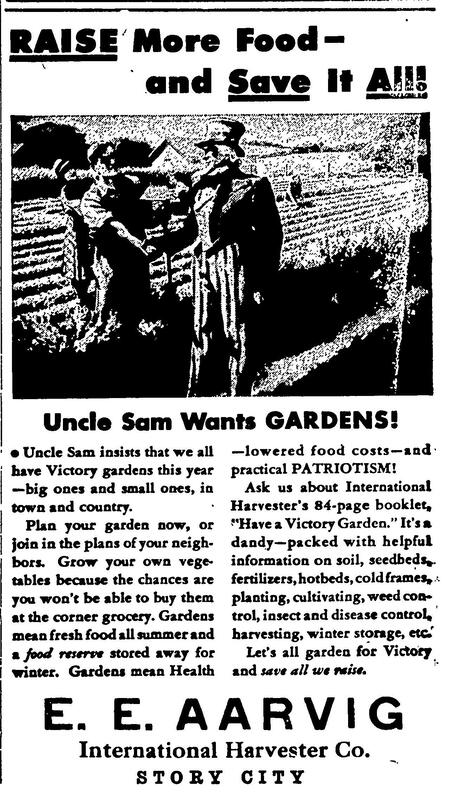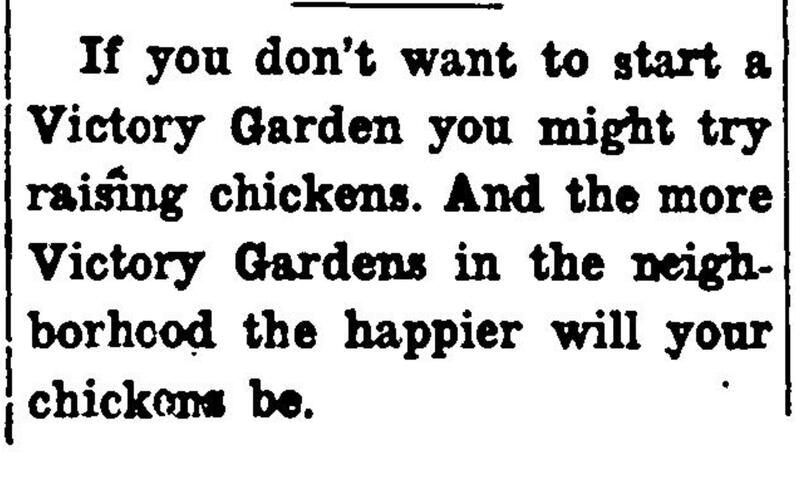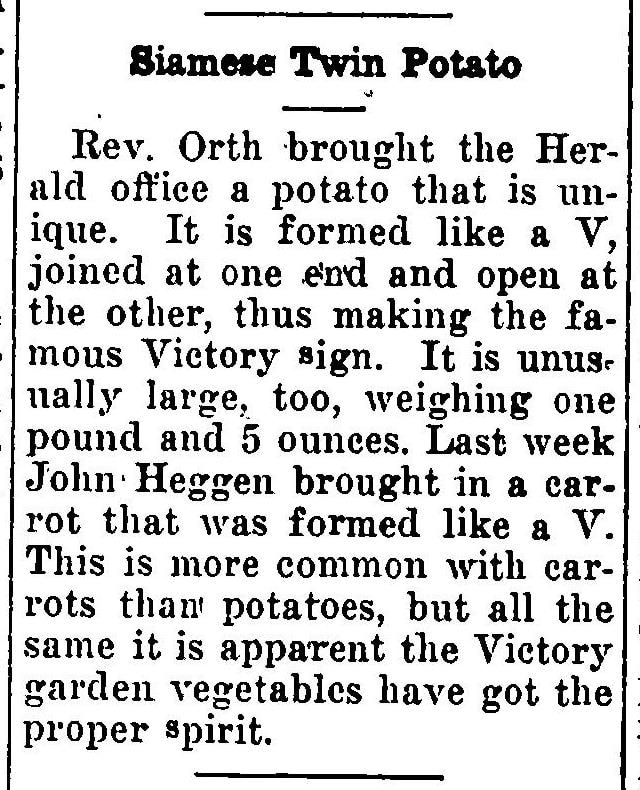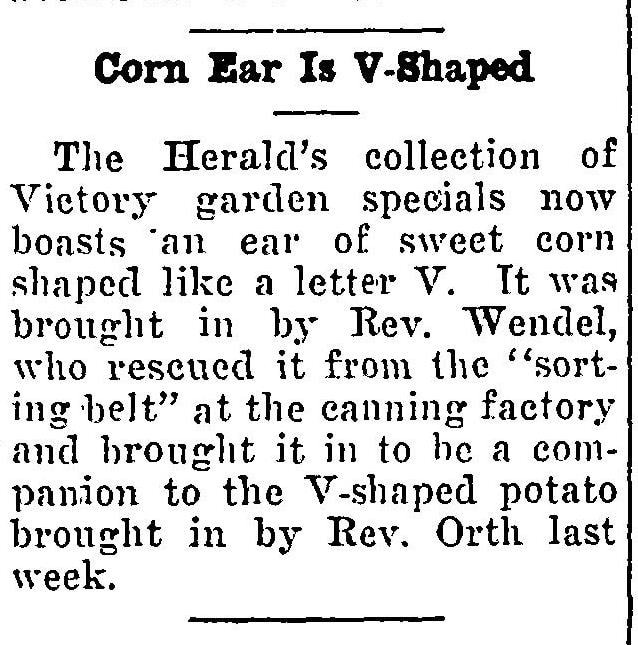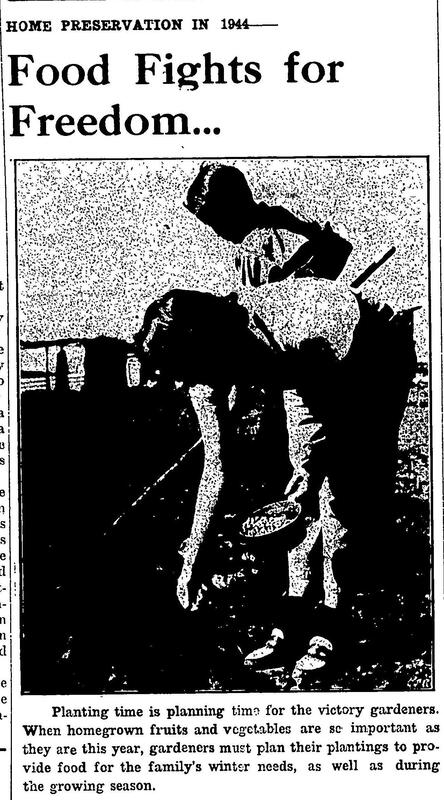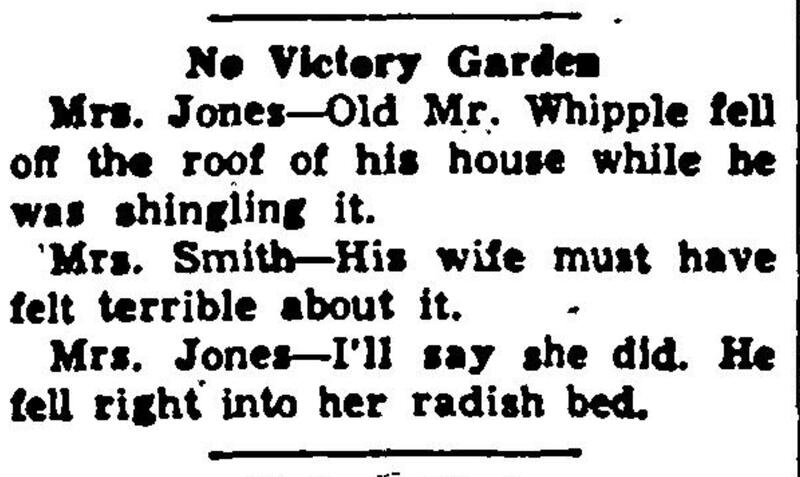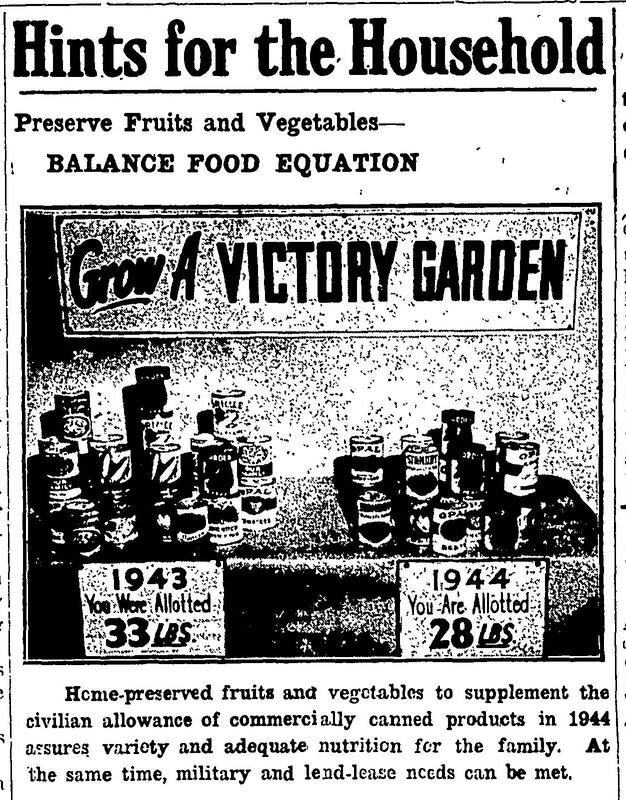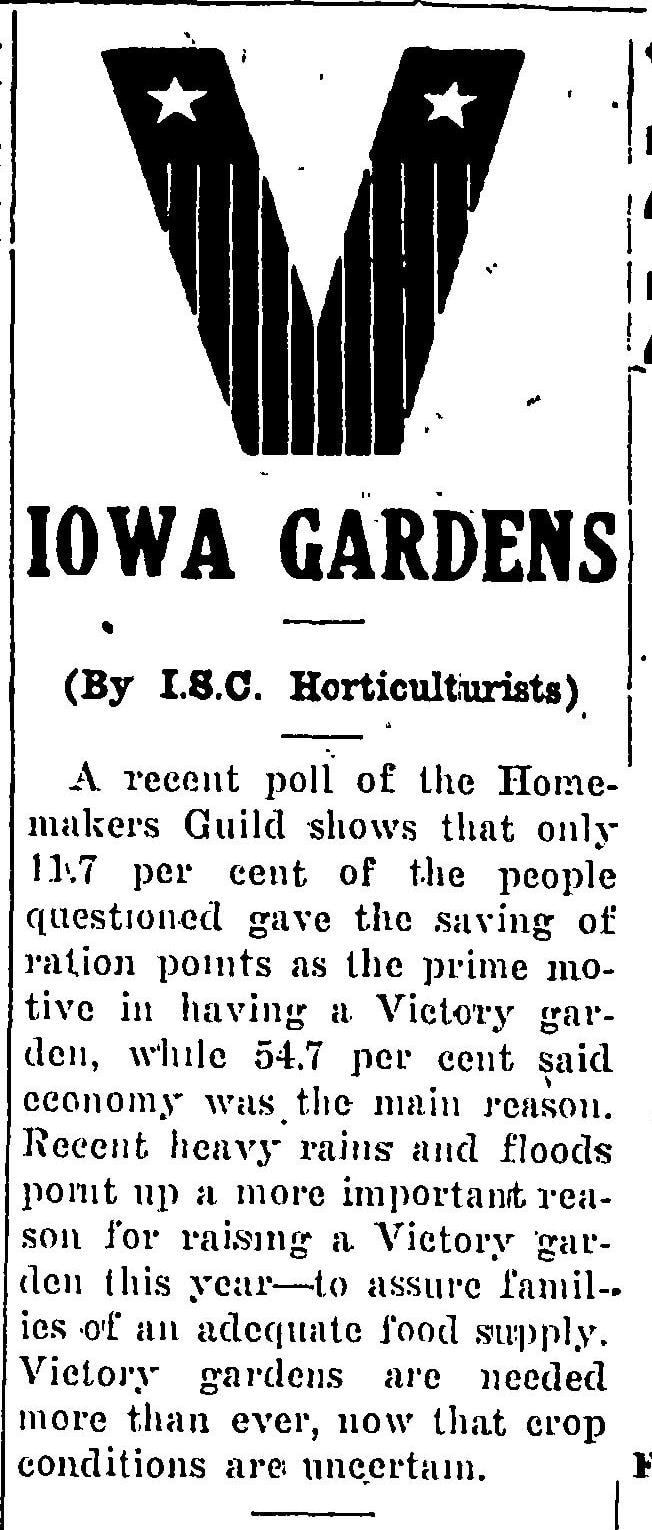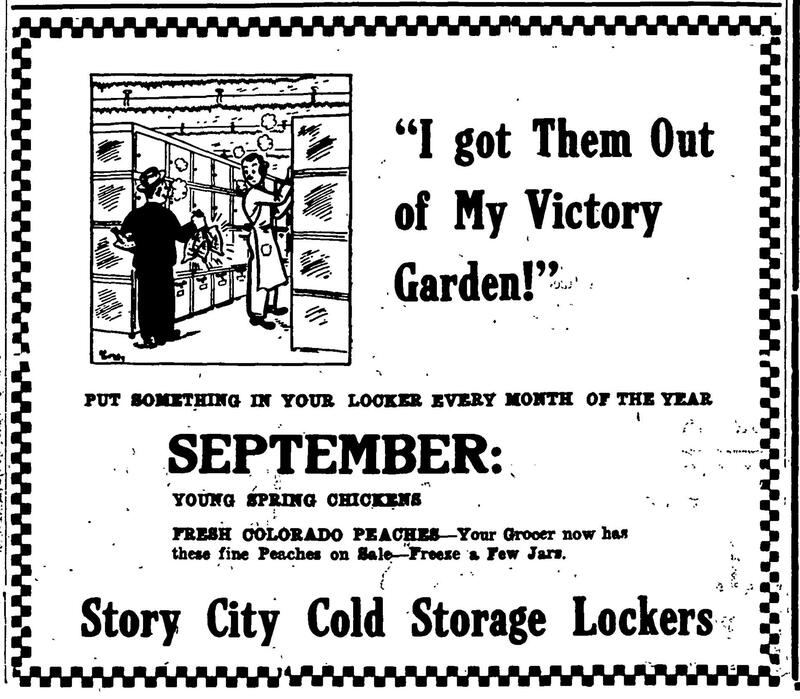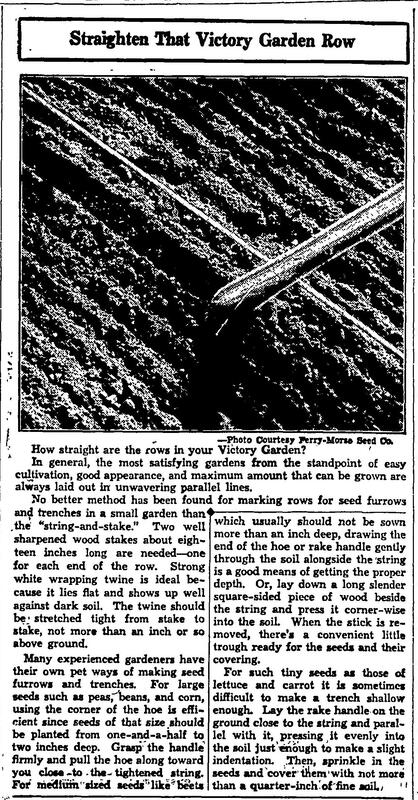Rationing During the Second World War
The Second World War called for Americans to make sacrifices in many sectors of their lives. As industry began to be rerouted to produce for the war effort and the soldiers overseas, Americans began to face shortages in items such as metal, rubber, and fabric. Even more acutely felt was the food shortage, as agricultural labor was rerouted to war production and canned goods were sent overseas to troops.
To ensure that Americans had equal access to the limited American food supply, the Office of Price Administration (OPA) was established in 1941 to create a rationing system and ensure that food prices stayed within reasonable limits. To do this, every American was issued a ration book that was filled with smaller stamps that could be exchanged for goods and products. The value of the stamp could change depending on the availability of the product, which was also determined by the OPA and printed by local newspapers. Citizens were not allowed to purchase more products than they had stamps for, which led to many creative substitutes and meals during the war years that required careful planning on the cook's part. Rationing would last until 1947, with sugar being the last rationed item.
To ensure that Americans had equal access to the limited American food supply, the Office of Price Administration (OPA) was established in 1941 to create a rationing system and ensure that food prices stayed within reasonable limits. To do this, every American was issued a ration book that was filled with smaller stamps that could be exchanged for goods and products. The value of the stamp could change depending on the availability of the product, which was also determined by the OPA and printed by local newspapers. Citizens were not allowed to purchase more products than they had stamps for, which led to many creative substitutes and meals during the war years that required careful planning on the cook's part. Rationing would last until 1947, with sugar being the last rationed item.
War Ration Book Number One was released on May 4, 1942, and was called the "Sugar Book" because sugar was in short supply, due to its need to be imported. Coffee followed suit because of German attacks on Brazil, one of America's largest importers of coffee beans. By the end of 1942, ration books had coupons for sugar, coffee, typewriters, gasoline, bicycles, shoes, rubber footwear, silk, nylon, fuel oil, and stoves. By the end of 1943, meat, lard, shortening, cheese, butter, margarine, dried fruits, canned milk, firewood and coal, jams, jellies, and fruit butter were rationed as well.
|
War Ration Book Number Two was issued in March of 1943. In Story City, citizens were responsible for picking up their ration books at the schoolhouse within a certain number of days. To make the process go more smoothly, citizens were encouraged to pick up their ration books according to their last names. People with letters earlier in the alphabet were encouraged to come in the first few days, and the latter half of the alphabet was encouraged to come in during the last few days of the distribution.
|
Ration Book Two consisted of red and blue stamps that were worth different point values, 1, 2, 5, and 8 points. Red stamps were used to ration meat and butter, and blue stamps were used to ration processed foods. The government issued "point tokens" to give retailers the ability to make change for ration stamps. Red point tokens were given in change for red stamps and blue point tokens were given for blue stamps. The tokens were about the size of dimes.
War Ration Book Three
War Ration Book Numbers Three and Four were released in late 1943. Also included in these ration books were sayings designed to encourage public cooperation with the rationing system. In the third book, this statement was, "Rationing is a vital part of your country's war effort. Any attempt to violate the rules is an effort to deny someone his share and will create hardship and help the enemy." Also included were motivational sayings to hearten and inspire citizens. Ration Book Number Three featured the saying, "Give your whole support to rationing and thereby conserve our vital goods. Be guided by the rule: 'If you don't need it, DON'T BUY IT.'"
War Ration Book Four
Gasoline & Tire Rationing
|
Starting in January of 1942, just a few weeks after the U.S. entered the war, tires were the first product to be rationed. In order to make tires last longer the government instituted a mandatory war-time speed limit and gas rationing.
In the March 19, 1942 edition of the Story City Herald, it was announced that Gov. George Wilson made a proclamation asking all Iowans to observe a maximum speed limit of 40 MPH for the duration of the war. This was in response to a letter received from President Roosevelt urging all state governors to cooperate in the plan. By May of 1942 a national speed limit of 35 MPH was adopted, known as the "Victory Speed." |
Also in May of 1942 the first mandatory gas rationing was put into place in 17 states and by December of that year the mandate was extended to the rest of the 48 states including Iowa. Story City residents registered for gas rationing at the schoolhouse on November 12-14. It was reported the November 19th edition of the Herald that 612 gas ration books were issued in Story City. Gas rationing would be in effect until the end of the war.
Additional Articles and Advertisements in the Story City Herald about Rationing
Victory Gardens in Story City
|
One way that Americans assured that their families and communities had enough fresh and canned food throughout the year was by growing Victory Gardens. Planting large gardens during wartime started during the First World War, and were brought back to help counteract the food shortages of the Second World War. Citizens were encouraged to grow large gardens and small livestock as part of the patriotic movement to involve every man, woman, and child in the war effort. First Lady Eleanor Roosevelt even grew a Victory Garden on the White House lawn!
|
The Story City Herald encouraged citizens to grow gardens by giving garden advice, anecdotes, and encouragement to those who were doing their bit to lessen the strain on the American food supply. Kids were also encouraged to join the effort, and received 4-H awards for the produce and products they made from their home gardens. As with other campaigns like war bond sales and Red Cross donations, advertising was a very important method to create exposure and raise morale for Victory Gardens. Local businesses took out ads to encourage the planting of Victory Gardens, and the Story City Herald printed ads and advice columns.
The Iowa State College Advice Columns in the Story City Herald for Victory Gardens
Additional Victory Garden Story City Herald Articles
Sources
Ames History Museum. World War II Rationing on the U.S. Homefront, https://ameshistory.org/content/world-war-ii-rationing-us-homefront.
National World War II Museum. Ration Books, https://www.nationalww2museum.org/students-teachers/student-resources/research-starters/take-closer-look-ration-books.
National World War II Museum. Rationing, https://www.nationalww2museum.org/war/articles/rationing.
Story City Herald Newspaper, available through the Digital Archives of the Bertha Bartlett Public Library. Retrieved from http://berthabartlett.advantage-preservation.com/.
Ames History Museum. World War II Rationing on the U.S. Homefront, https://ameshistory.org/content/world-war-ii-rationing-us-homefront.
National World War II Museum. Ration Books, https://www.nationalww2museum.org/students-teachers/student-resources/research-starters/take-closer-look-ration-books.
National World War II Museum. Rationing, https://www.nationalww2museum.org/war/articles/rationing.
Story City Herald Newspaper, available through the Digital Archives of the Bertha Bartlett Public Library. Retrieved from http://berthabartlett.advantage-preservation.com/.

